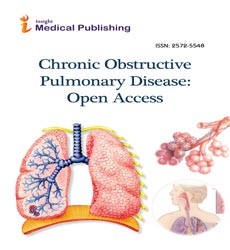Abstract
Usability and Cost-of-Usability of Three Dry-Powder Inhalers (DPIs) in Patients with Chronic Obstructive Pulmonary Disease (COPD): May These Variables Influence the Health Technology Assessment of DPIs?
Background: Inhalation devices affect per sé the effectiveness and the outcomes of treatment in chronic obstructive pulmonary disease (COPD), independently of the drug(s) administered. Patients’ usability (PU) of Dry Powder Inhalers (DPIs) further contributes in influencing the adherence to, and the impact of treatment.
Aim: To measure and compare the PU and the PU economic impact of three different DPIs in COPD.
Methods: The PU of Breezhaler, Genuair, Handihaler, and the corresponding cost for achieving a proper actuation were investigated and compared in 158 consecutive COPD out-patients. Patients actuated each device after the nurse’s instruction. The nurse reported all the critical steps occurring during the patient’s actuation; to count the attempts needed for actuating each device properly, and to measure the time required for these procedures.
Results: 70 patients tested the three DPIs (66-68 years; well matched for gender). Mean number of attempts to the first proper actuation was the lowest with Genuair (p < 0.0001). Genuair also proved the easiest to use by the nurse judgement (p < 0.0005); the most easily learned (p < 0.0001), and had a successful rate >40% at the first attempt. The mean training cost/patient was the lowest with Genuair (p < 0.0001). When the training cost for achieving a proper inhalation at the first attempt was added to the drug crude cost, the overall cost was € 51 for Genuair, € 75 for Handihaler, and € 122 for Breezhaler.
Conclusions: When the multifaceted aspects of PU are assessed carefully and objectively, some relevant differences among DPIs become clear. DPIs requiring less actions and a shorter training have a proper usability after less attempts. These DPIs also have the lowest cost-of-usability. Cost-of-usability is a novel cost to add to the crude cost of drug(s) in order to grade effectively the DPIs performances, as it could affect substantially the HTA of some devices.
Author(s):
Roberto W Dal Negro, Massimiliano Povero
Abstract | Full-Text | PDF
Share this

Google scholar citation report
Citations : 130
Abstracted/Indexed in
- Google Scholar
- China National Knowledge Infrastructure (CNKI)
- Publons
- Geneva Foundation for Medical Education and Research
- Secret Search Engine Labs
Open Access Journals
- Aquaculture & Veterinary Science
- Chemistry & Chemical Sciences
- Clinical Sciences
- Engineering
- General Science
- Genetics & Molecular Biology
- Health Care & Nursing
- Immunology & Microbiology
- Materials Science
- Mathematics & Physics
- Medical Sciences
- Neurology & Psychiatry
- Oncology & Cancer Science
- Pharmaceutical Sciences

